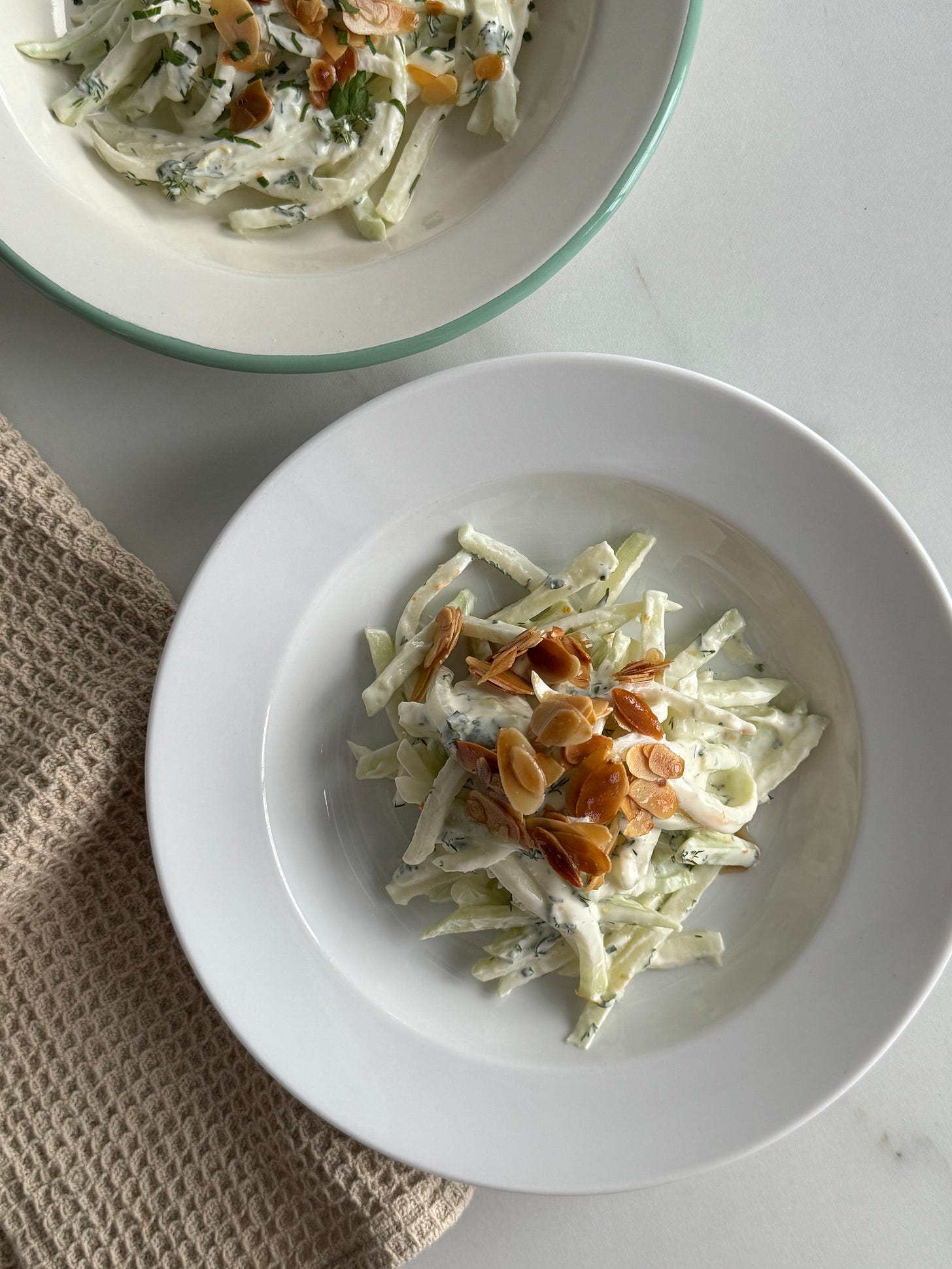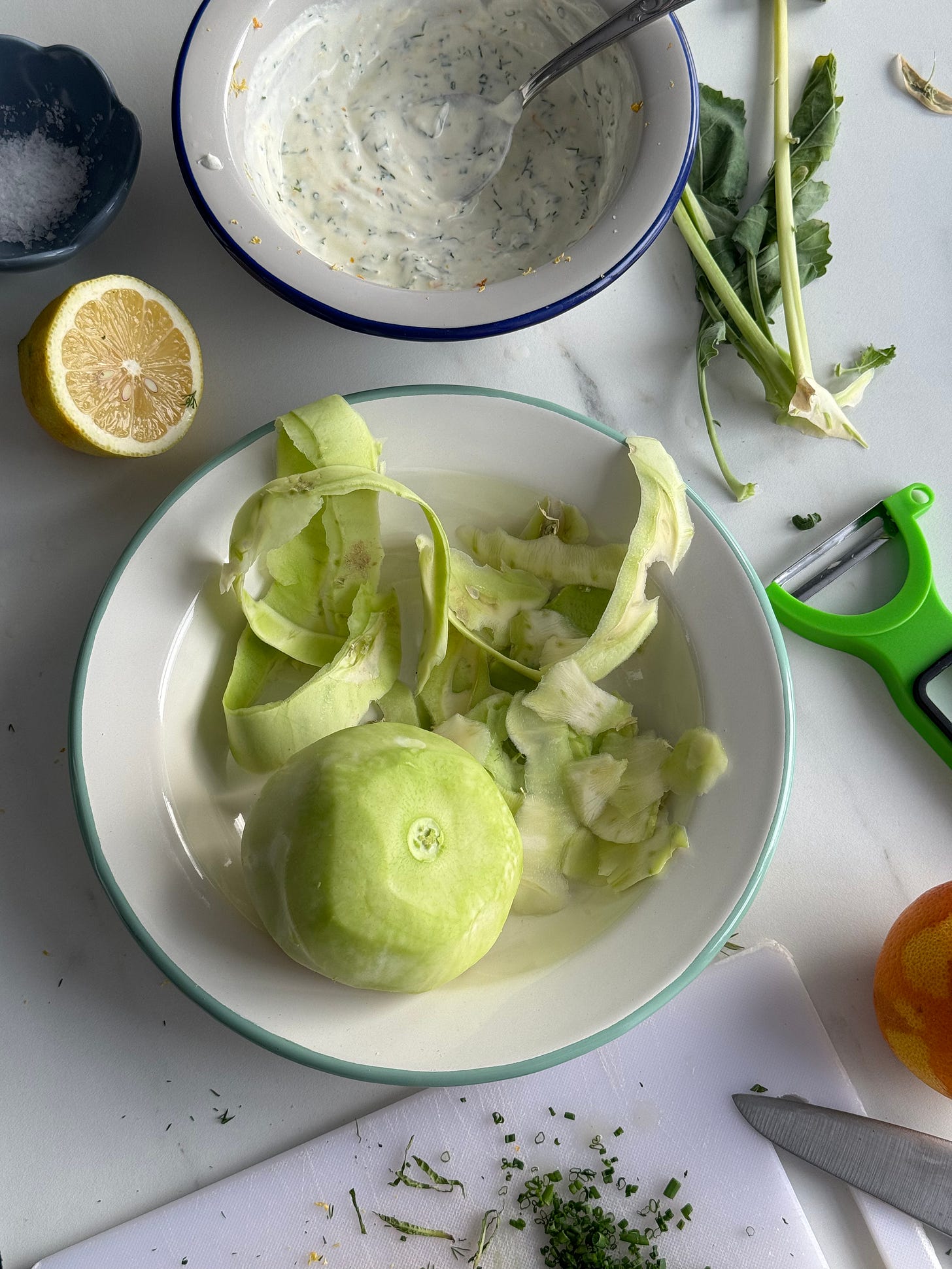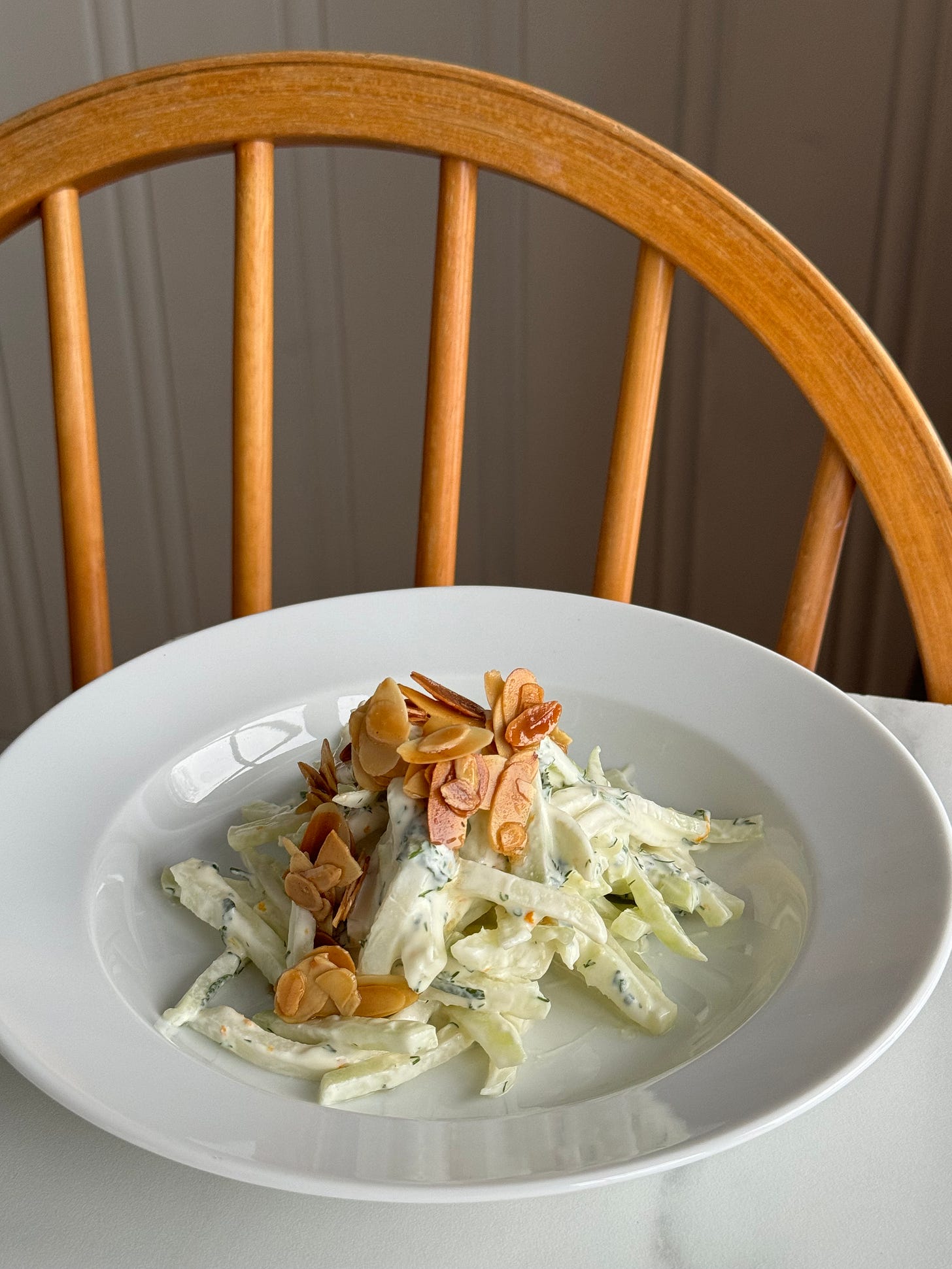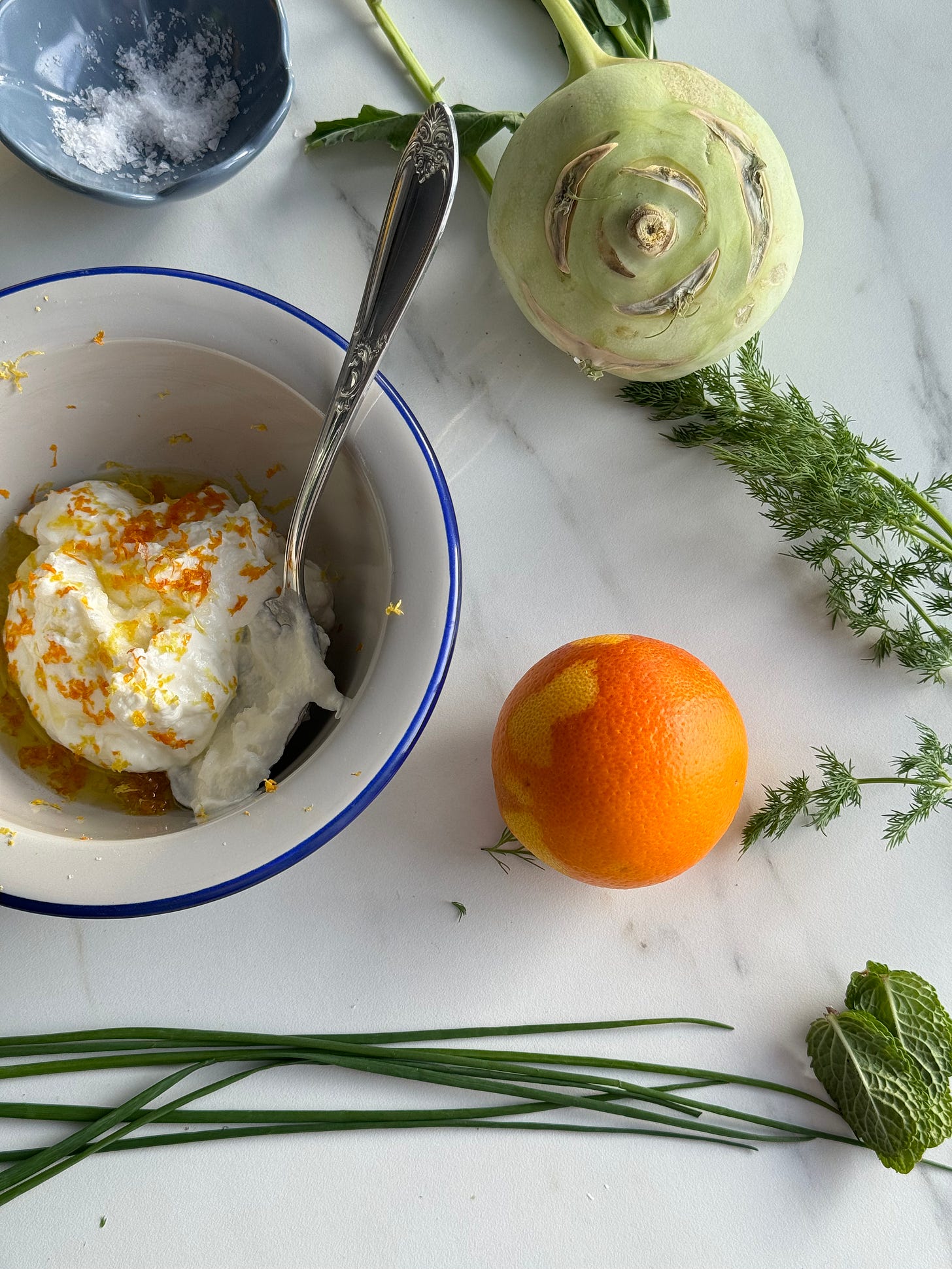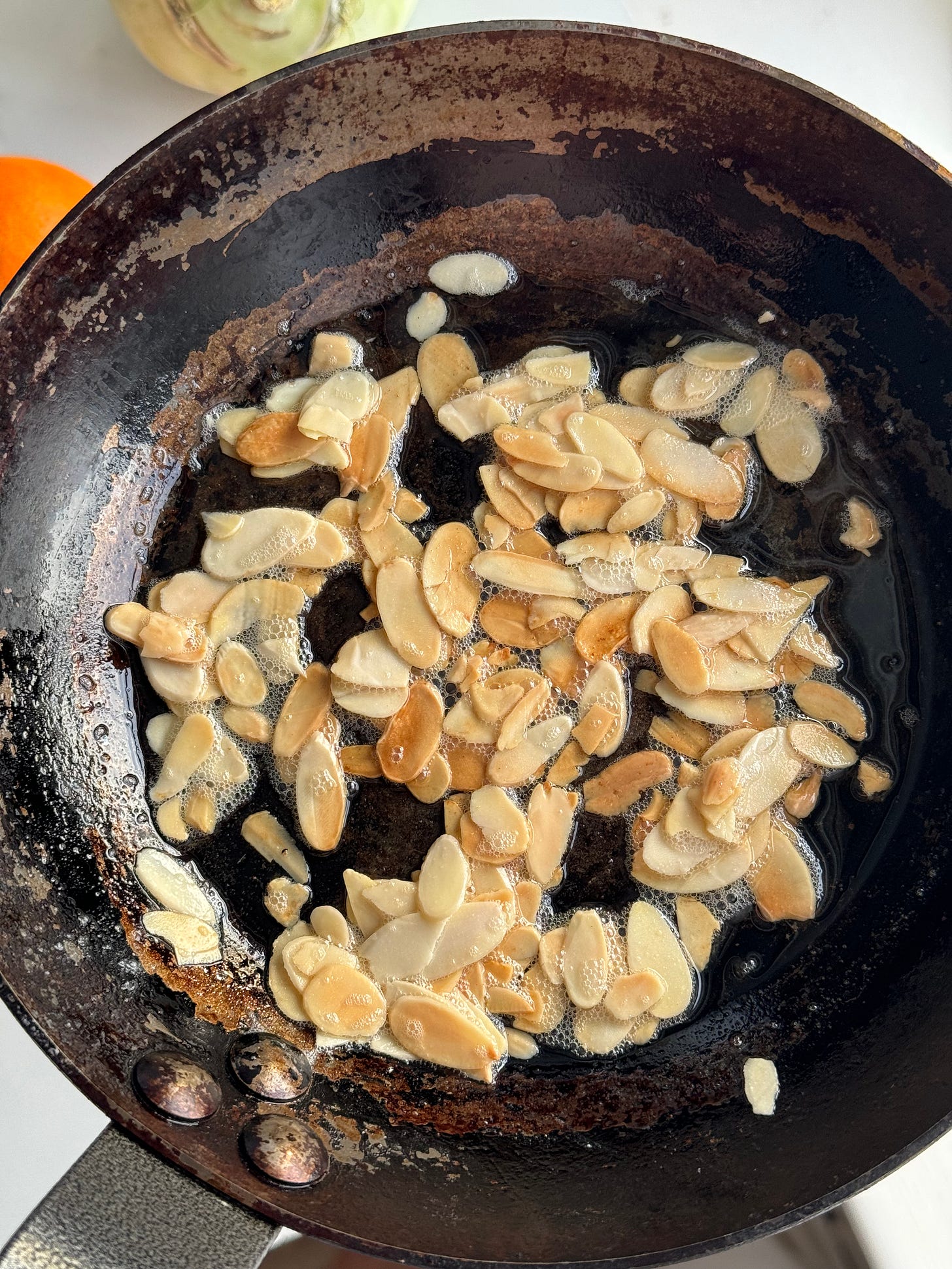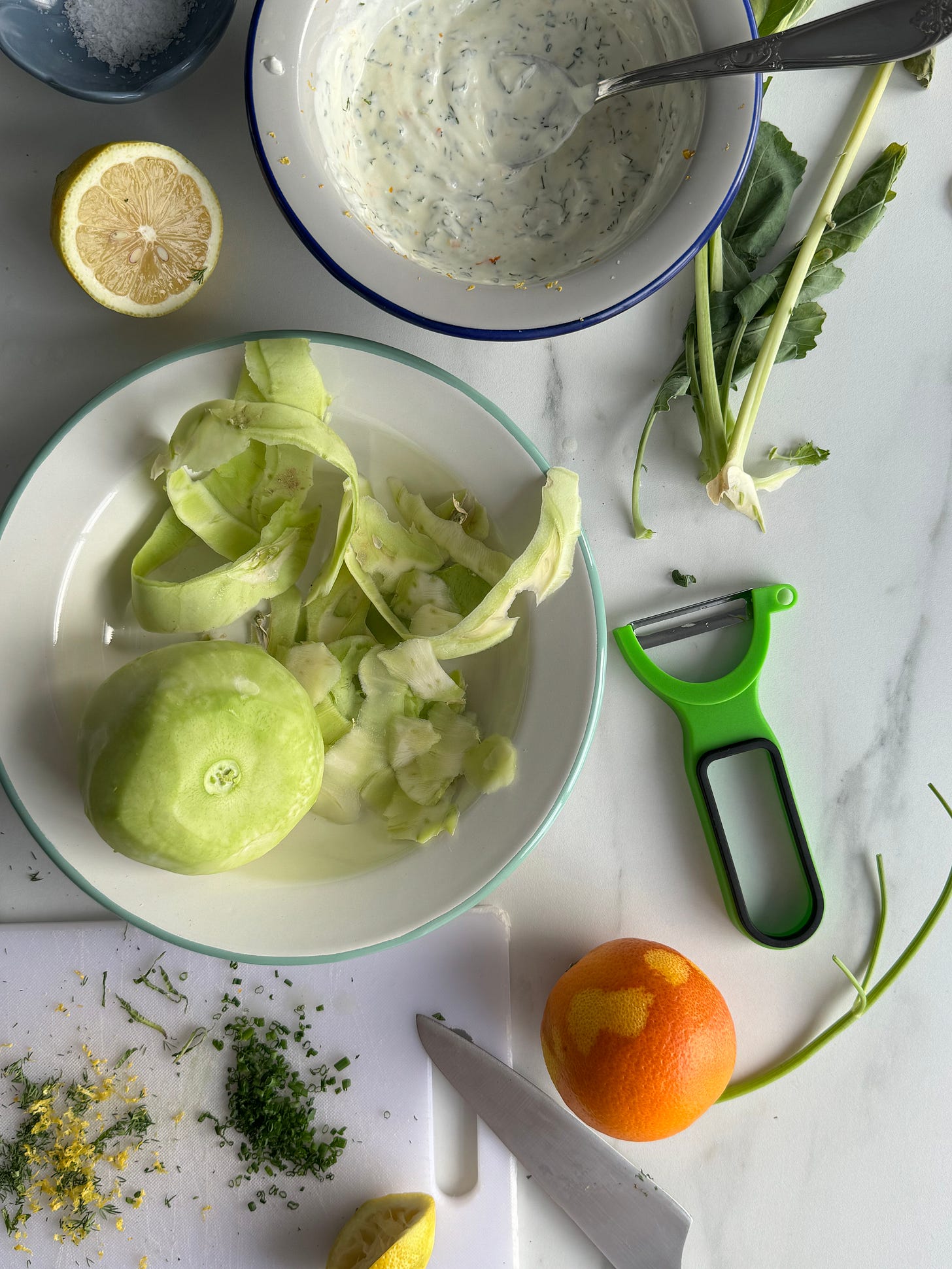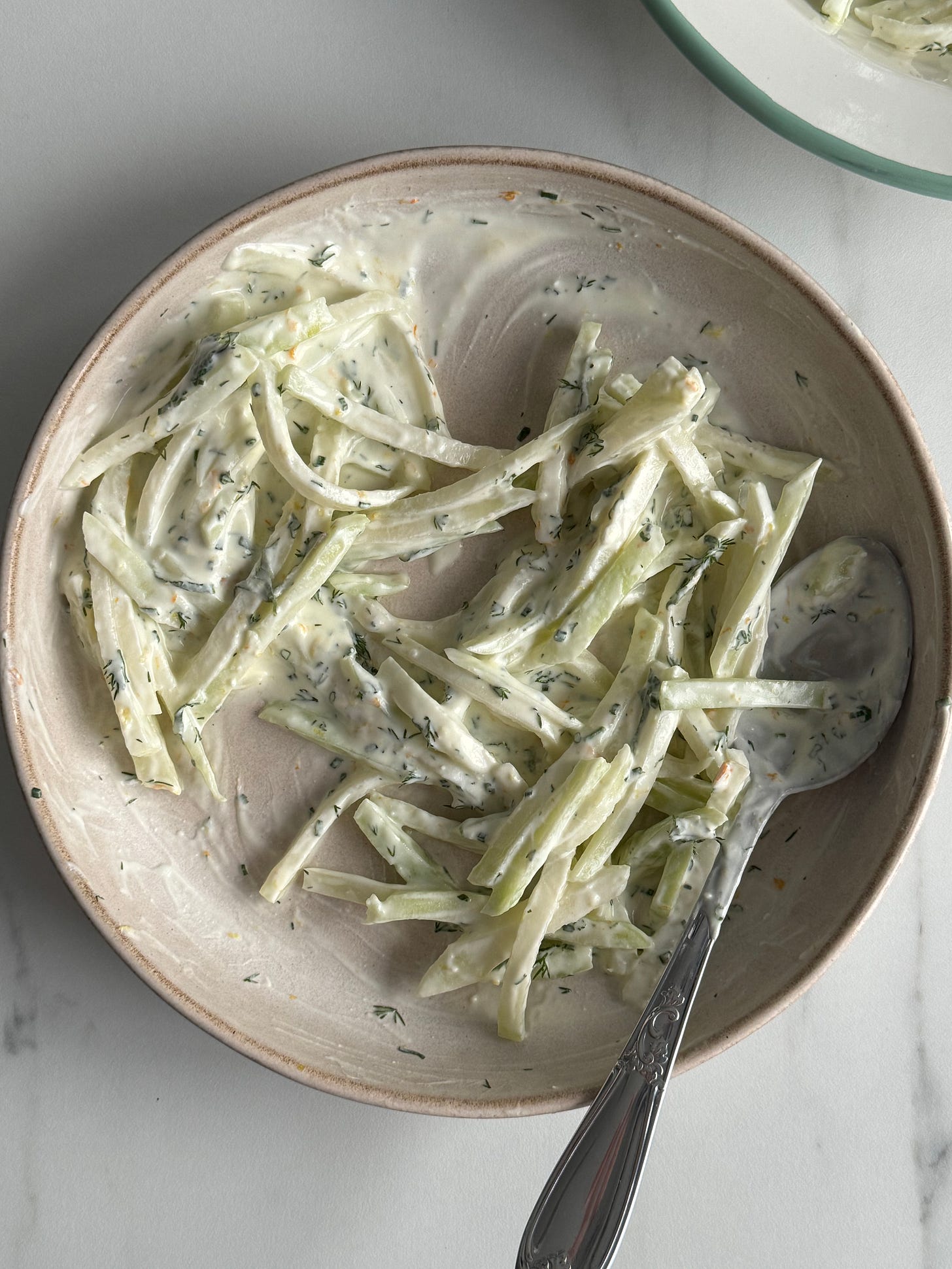Allô! 👋
Hello! Welcome to the seasonal sundays section of the good food at home newsletter. This is a weekly-ish paid supplement that aims to provide simple recipes for those seasonal ingredients that may sometimes elude or confound us in the kitchen. The main newsletter will always be free, but by subscribing to seasonal sundays you will not only be able to access extra recipes + the full archive, you’ll also help to support all the researching, cooking, documenting & writing that goes into sharing this newsletter with you. If you’d like to be a part of a growing community and show you value this work, subscribing is easy and costs less than £2 per week (less than £1/week with an annual subscription or free if you refer some friends, and the first 7 days are always free)! Why not give it a shot? We’d love to have you 💛
While kohlrabi isn’t technically “in season” (it is primarily harvested in early summer and early autumn, depending on where it is grown), neither is most local produce at this time of year — at least, not in regions like mine where the days are too cold, too dark, and the snowfall too heavy for most open-field cultivation.
Kohlrabi is nonetheless one of winter’s heroes in my eyes as, much like carrots, potatoes, and cabbage, it is a vegetable well suited to long-term cold storage (quite handy in mid-February when the soil is busy enjoying some well-earned annual rest). Unlike carrots, potatoes, and cabbage, however, kohlrabi can leave many of us scratching our heads as to what on Earth to make with it — and how to enjoy it well.
If you’ve never seen kohlrabi before, it can at first seem a little intimidating. Luckily, it quickly becomes less daunting as soon as you begin to think of it as a sort of independent broccoli stem with a sweet-yet-peppery, well-rounded personality. Great roasted, in soups or in fritters, I’ve always been quite fond of it raw in a slaw. Not the dainty kind with fine threads of veg delicately laced through a barely-there vinaigrette, but more so the heartier variety, with chunkier strands tossed through a creamy coating for more substantial fare.
•••
The recipe below should adapt well to most other cold-storage produce that can be enjoyed raw, alone or in combination, so do feel free to use it as a launchpad for other “seasonal” ingredients — think of cabbages (red, green, smooth or textured) and carrots, but also of beetroot, parsnip, celeriac, apple, sweet potato, sunchoke, and pear.
kohlrabi slaw with creamy herb and citrus dressing + toasted flaked almonds
serves 2 as a starter or finisher, or 4 as a side (add some whole grains, beans, roast veg, and an extra source of protein and you’ve got yourself a nicely varied meal)
INGREDIENTS
for the dressing
• 2 heaped Tbsps full fat Greek yogurt and/or mayonnaise
• 2 tsps extra virgin olive oil
• half a lemon, for its zest* and juice
• half an orange, for its zest*
• 3 Tbsps finely chopped fresh tender herbs like dill, chives, mint and/or flat leaf parsley
• flaky sea salt
for the slaw
• 1 large kohlrabi, green or purple
• 1 sharp knife, as well as a good box grater and/or a mandoline + cut-resistant glove (not ingredients per se, but handy tools to have for the task)
for the garnish
• 1 generous handful flaked almonds
• butter (optional)
• extra virgin olive oil (optional)
• fresh parsley, finely chopped (optional)
• Parmesan (optional)
• crispy fried shallots or onions (optional)
• flaky sea salt
• freshly cracked black pepper
*: here’s a juicy tip! any time you need a lemon, orange or lime (preferably organic and unwaxed) only for its juice, zest it first into a small jar, container, or resealable bag — then pop the zest into the freezer for a later day
METHOD
1. Make the dressing: combine 2 heaped Tablespoons of Greek yogurt and/or mayonnaise in a bowl (I’ve been preferring yogurt over mayo lately, but the option exists to accommodate what you like and what you have on hand) along with the zest of half a lemon and the zest of half an orange. Add in 2 teaspoons of olive oil and a good pinch or two of salt.
Finely chop 3 Tablespoons’ worth of fresh tender herbs (I used chives, dill, and mint), then add them to the bowl. Stir well to combine, then squeeze in a bit of fresh lemon juice and stir again, repeating this process once or twice more as necessary to loosen the dressing to your taste (around 2 Tablespoons’ worth of lemon juice seemed the right amount for me). Set aside to let the flavours mingle.
2. Toast the almonds: this can be and is often done dry (i.e. without fat). To do so, simply add a handful or two of flaked almonds to a pan on medium-low heat, and let them colour — tossing occasionally so they don’t cook unevenly— until fragrant and golden. My preferred method for a winter slaw is however a bit richer and involves the additional slick nuttiness of browned butter.
To “toast" the flaked almonds in fat (essentially frying them), place a small pan on medium-low heat. Melt a small pat of butter in the pan, then add in a handful or two of flaked almonds. Keep cooking, stirring often, until the butter has browned. Once there, add in the tiniest splash of olive oil to stop the butter from burning, then continue cooking a few minutes more until all almonds have gotten some colour, with some more deeply golden than others.
3. Prepare the kohlrabi: tear off any leafy stems from one large kohlrabi, reserving any nice looking leaves for another dish (a stew, a stir-fry, a sauce). Using a vegetable peeler, remove the fibrous outer layer from the bulb, making more than one pass if necessary.
Using a sharp knife, box grater, or mandoline with a medium-tooth shredding blade attached, take your time and finely slice the kohlrabi into thin batons or shoelace shreds (be mindful of your fingers). You may want to halve the kohlrabi first to make the shredding easier. Set aside in a wide bowl.
4. Dress the veg: add one spoonful of dressing to the bowl containing the sliced kohlrabi, then toss and stir to coat the strands well. Give a piece of dressed kohlrabi a taste, then add more dressing and/or rectify the seasoning as necessary, adding a bit more of any of the dressing ingredients you may feel are underrepresented — follow your tastes! Just remember that you can always add ingredients, never subtract (for me, this meant using all of the dressing without needing to adjust any of the ingredient quantities). Plate up immediately or chill until ready to serve.
5. Time for the garnish! Divide the slaw into two or four servings (or one — the rest can always be refrigerated for later), piling it high onto each plate. Season parsimoniously with salt and pepper. Top with the toasted flaked almonds and, if you like, some finely chopped parsley. To make a memorable dish even more special, finish with some freshly grated Parmesan and/or crispy fried shallots or onions.
Enjoy at a nicely set table if you can, with people you like (that includes you!) and music you find pleasant, and enjoy 💛
Keep reading with a 7-day free trial
Subscribe to good food at home to keep reading this post and get 7 days of free access to the full post archives.





